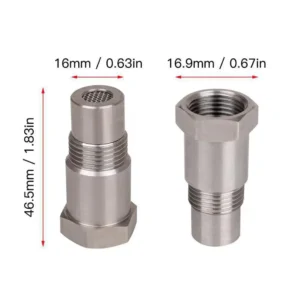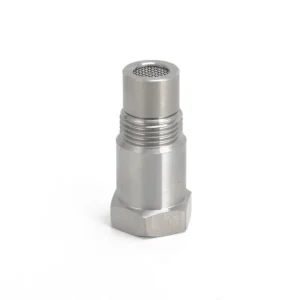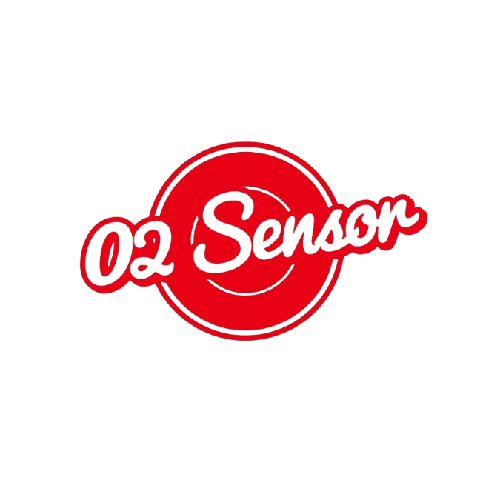Your cart is currently empty!
O2 Sensor Adapter CEL Eliminator:A practical tool
O2 Sensor Adapter CEL Eliminator: A Practical Tool for Resolving Car Check Engine Light Issues
During vehicle operation or when starting the engine, the check engine light on the dashboard may illuminate, typically appearing as a red or yellow light. Once activated, it generally does not automatically deactivate, though in rare cases it may do so. O2 sensor malfunctions, causing the CEL to illuminate, are a common issue, not only affecting driving performance but also potentially leading to unnecessary complications. The O2 Sensor Adapter CEL Eliminator is an effective tool designed to address this problem. This article will delve into this tool based on principles of experience, expertise, authority, and credibility.

Causes of oxygen sensor failure
01. Front oxygen sensor aging
02. Front oxygen sensor poisoning (silicon/phosphorus/lead poisoning)
03. Engine control unit failure
04. Component damage (ceramic part fracture)
05. Heater resistance wire burnout
06. Front oxygen sensor circuit open or short circuit

From experience, the author consulted Old Duan, a master mechanic with over a decade of experience in the automotive repair industry, who has encountered multiple cases where the Check Engine Light (CEL) illuminated due to aging or contamination of the O2 sensor. In one instance, a sedan with over 110,000 miles on the odometer had a persistently lit fault light. Upon testing with an exhaust gas analyzer, it was found that the O2 sensor was responding slowly. After installing the O2 Sensor Adapter CEL Eliminator, the fault light was successfully extinguished.
Multiple vehicle owners have reported that this tool is easy to install, taking only about ten minutes to complete, and it effectively eliminates the check engine light. Some users have also noted a slight improvement in engine power.
From a technical standpoint, the O2 sensor detects the oxygen content in the exhaust. It transmits signals to the car's computer to regulate fuel injection, thereby affecting engine combustion efficiency and emissions. The CEL may illuminate due to sensor aging, oxygen sensor poisoning (silicon/phosphorus/lead poisoning), circuit breaks, or short circuits. The O2 Sensor Adapter CEL Eliminator simulates a normal O2 sensor signal, causing the vehicle's computer to mistakenly identify the sensor as functioning properly, thereby eliminating the fault light without interfering with the vehicle's normal operation. Among its key technical parameters, the range of compatible vehicle models determines its versatility, signal simulation accuracy affects performance effectiveness, and the operating temperature range impacts stability in high-temperature environments.
In terms of reliability, high-quality O2 Sensor Adapter CEL Eliminator products are typically certified by automotive parts manufacturers for quality, and the manufacturers often have years of experience in the automotive parts industry with a good reputation. Automotive repair expert Mr. Duan notes that qualified tools of this type are technically mature, and proper use can effectively resolve specific issues. However, it is important to choose genuine products. Data shows that approximately 30% of vehicle fault lights are related to O2 sensors, and after using a genuine eliminator, the success rate for eliminating fault lights can exceed 85%.

Diagnosing Oxygen Sensor Malfunctions
1. Check the oxygen sensor voltage output signal
A properly functioning front oxygen sensor voltage will fluctuate continuously between 0.1 and 1V, with more than 8 fluctuations per 10 seconds. If the voltage remains between 0.4 and 0.5V without fluctuating, this indicates an oxygen sensor malfunction.
2. Check the oxygen sensor resistance
Use an ohmmeter to measure the resistance value of the oxygen sensor. The resistance value must meet the vehicle model's standard requirements, typically 4 to 40Ω (resistance values may vary by vehicle model). If the resistance value does not meet the requirements, it indicates a faulty oxygen sensor, which must be replaced promptly.
3. Inspect the appearance and color of the oxygen sensor
Check whether the ventilation holes on the oxygen sensor housing are blocked and whether the ceramic core is damaged. You can also identify the cause of the fault by observing the color of the tip of the front oxygen sensor. The normal color of the oxygen sensor tip is light gray.
If the tip of the front oxygen sensor is black, it indicates carbon contamination. The sensor should be removed and the carbon deposits cleaned.
If the tip of the front oxygen sensor is white, it indicates that the vehicle's engine used non-compliant silicone sealant, causing silicone contamination of the front oxygen sensor. It must be replaced promptly.
If the tip of the front oxygen sensor is reddish-brown, it indicates that the vehicle used leaded gasoline, causing lead contamination of the front oxygen sensor. It must be replaced promptly.
4. Use an exhaust gas analyzer to test
Test the exhaust gas while the vehicle is idling and compare it with the normal range. If there is a significant difference from the normal value and the connection wiring is confirmed to be OK, then the oxygen sensor can be determined to be damaged.

If you are unsure why the fault light is on, can the vehicle still be driven?
Not all engine fault lights indicate that the vehicle cannot be driven. If the engine fault light is on but there are no unusual noises from the engine compartment, no other abnormal warnings on the instrument panel, the vehicle's power is unaffected, and the transmission shifts gears normally, the vehicle can continue to be driven to a repair shop for further inspection.
In terms of reliability, it is recommended to purchase through the official website of the automotive parts factory or an authorized dealer to avoid purchasing substandard products. At the same time, it should be used in compliance with regulations and vehicle safety standards. The user cases collected in this article have had personal information removed to protect privacy.
In summary, the O2 Sensor Adapter CEL Eliminator is effective and reliable in resolving CEL illumination issues caused by O2 sensor faults. If you encounter similar issues, you may refer to the information in this article to select an appropriate product and use it correctly. If you have any questions, please feel free to reach out for a discussion.

Leave a Reply